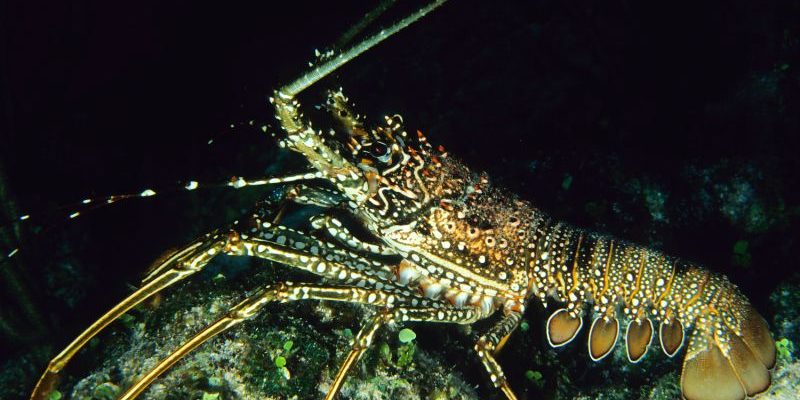Florida’s spiny lobster season is a cherished tradition, offering a chance to catch your own fresh seafood and experience the thrill of the hunt. But for first-time lobster hunters, navigating the regulations, gear, and techniques can seem daunting.
Fear not, intrepid crustacean crusader! This guide will equip you with everything you need to have a successful and safe DIY lobstering adventure.
Know the Rules: Florida Regular Spiny Lobster Regulations

Source: https://coastalanglermag.com/
Before you head out, it’s crucial to understand the Florida Fish and Wildlife Conservation Commission (FWC) regulations for spiny lobster. Here’s a quick rundown:
- Season: Officially runs from Aug. 6-March 31.
- Size Limit: The carapace (hard shell) must be at least 3 inches long, measured from the notch between the head and body to the rear edge of the body shell. Undersized lobsters must be returned to the water unharmed.
- Bag Limit: Six spiny lobsters per person per day.
- Egg-bearing females: It’s illegal to harvest egg-bearing females. Other eggbearing species of lobster that are prohibited are Palinuridae, Scyllaridae, and Synaxidae. Spiny, slipper, and furry lobsters respectively.
- Recreational Lobster Permit: a recreational saltwater fishing license and a lobster permit are required to harvest spiny lobster.
- Some other prohibitions: Lobster must be landed shoreside in whole condition, tails cannot be removed while on the water. No person shall harvest or attempt to harvest spiny lobster using any device that will or could puncture, penetrate, or crush the exoskeleton (shell) or the flesh of the lobster
Gearing Up for Lobstering Success
Now that you’re familiar with the regulations, let’s talk about the tools of the trade:

- Lobster Buoys: You’ll need sturdy lobster buoys that float and comply with FWC regulations (typically red or orange with your identification information).
- Gloves: Protect your hands from coral, shells, and spiny lobster claws with thick work gloves.
- Mesh Bag: A mesh bag helps you store your catch while keeping them healthy in the water.
- Measuring Tool: Bring a ruler or caliper to measure the carapace length of your catch and ensure they meet the size limit.
- Safety Gear: Never underestimate the power of the ocean. Life jackets are essential, and if you’re venturing offshore, consider additional safety equipment like flares and a VHF radio.
Only commercial lobster fishermen are permitted to use traps. Recreational trapping is prohibited.
It is also against the law to damage, molest, or take lobster from traps in state or federal waters. Whether you approve of them or not, those commercial lobster traps—with their buoys dotting the horizon—provide a source of family income. “Trap-robbing” is a felony offense. Stay away from the gear. Additionally, lobsters must be measured in the water.
Penalties for Lobstering Violations
Violating Florida’s lobstering regulations can result in significant penalties. Possession of undersized lobsters or violating any other regulation may lead to up to 60 days in jail, a $500 fine, or both. Separate offenses, each carrying the same penalty, include:
- Harvesting egg-bearing lobsters
- Using a spear to harvest lobsters
- Exceeding the bag limit of six lobsters per person per day
- Possessing more than your bag limit while in the water (i.e., one person holding a catch bag in the water containing more than six lobsters for more than one harvester).
- Allowing unlicensed individuals to count towards the bag limit – people not actively engaged in the harvest of lobster or who are not properly licensed may not be counted for bag-limit purposes.
- Possessing wrung lobster tails on the water
Additional penalties apply for taking lobsters in protected areas of the Florida Keys National Marine Sanctuary. Visit the Florida Keys National Marine Sanctuary website for details on these areas.
Finding Your Catch: Prime Lobstering Locations

Fort Lauderdale, Florida
Spiny lobsters prefer rocky habitats and reefs. Popular spots include jetties, natural reefs, and artificial reefs. Consult local dive shops, boat charters, or online resources for specific coordinates and recommendations in your area.
Safety Tips for a Smooth Lobstering Adventure
- Be Weather Wise: Always check the weather forecast before heading out. Avoid venturing out in rough seas or during thunderstorms.
- Boat Safety: If you’re using a boat, ensure it’s properly equipped and maintained. Let someone know your planned route and estimated return time.
- Be Aware of Your Surroundings: Watch out for boat traffic, divers, and other hazards while in the water.
- Respect the Environment: Dispose of any trash properly and avoid damaging the marine ecosystem.
- Handling Your Catch: Be gentle! Use gloves to handle lobsters and avoid squeezing their bodies. Once you’ve measured and verified they meet size regulations, keep them in your mesh bag submerged in water until you’re ready to cook.
With this comprehensive guide under your belt, you’re well on your way to a rewarding DIY lobstering experience in Florida.
Download FishVerify to easily identify your catch while keeping up with the latest regulations.
Remember, responsible fishing practices ensure a sustainable future for this delicious fishery. So grab your gear, embrace the adventure, and enjoy the fruits (or rather, crustaceans) of your labor!


